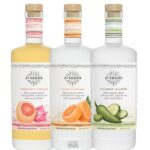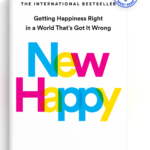I stopped reading most business and marketing books several years ago as I found that most of them had little to say that was novel or fresh. The authors would repeat the same things with an emphasis on a small insight or would take a nuanced idea and shine a very bright light upon it.
Many marketing books typically have one idea illustrated over hundreds of pages and probably should have been a blog post. I can listen to The Marketing Book Podcast and glean their central thesis. If it piques my interest to learn more, I’ll read it.
When a brand or marketing book is well-written with a clever and provocative framework, I know I will learn and rethink my assumptions.
This week, I reread my favorite marketing book, Different, Escaping From The Competitive Herd. This was the fourth time I had read this book, and it was a superb refreshment of branding focused on differentiation.
Different is ten years old but as fresh and insightful as it was in 2010 and even more relevant today.
The Great Blur Toward Similarity
Youngme Moon’s book Different is aptly named. It is a well-written and enlightening look at marketing. Moon is a professor at Harvard Business School and, along with two colleagues, has a remarkable podcast called After Hours.
Youngme argues in Different how in a struggle to be different; brands are merging, and categories are taking prominence.
When every battle is to add a feature, the competitive landscape becomes more similar than different.
Think about the toothpaste aisle, and when one brand adds tartar control, the others respond. When mouthwash is added, the herd follows. Or cereals where there is a rush to be gluten-free, GMO-free, or Keto. Marketers engage in augmenting or adding, and slipping toward sameness.
She describes this as a great blur toward similarity.
Three Ways to be Different
“What I liked about this book is that her writing style and approach to the subject gets into the contours and folds of marketing in interesting ways.”
She tells stories as an academic and a mom, not just as a Harvard Business School professor.
In one chapter, standing in the cereal aisle, she describes how people categorize the cereal brands, and honestly, nothing stands out because everyone is playing by category rules. Everything merges into a breakfast blend of brands. No one is challenging the approach to what cereal means since it is always about adding and augmenting with more fiber, less sugar, less fat, more this, and less than.
Those who buy cereal know the rules of categorization for this aisle and can segment kids versus adult brands or indulgent versus low-fat. But nothing is different.
She provides three different brand frameworks and a valuable way to consider being different. Reverse Brands, Breakaway Brands and Hostile Brands.
1. Reverse Brands
Reverse brands will eliminate benefits and feature new dimensions in the category. Removing features adds further value and brings forward areas to emphasize that are often missed. Ikea illustrates this point in that, unlike most furniture stores, they do not provide the essential features of assembly, delivery, or sales help in the store.
Category mandatory requirements aren’t provided. Instead, they offer a fresh approach to buying furniture. The strength of their brand is in what they don’t provide and in reframing the way the entire category operates.
In-And-Out Burgers and Jet Blue are two additional examples of reverse brands. The popular burger chain has a limited menu of six items, a rabid following, and a secret menu. Jet Blue built its brand on unbundling services like meals, luggage, and classes and even eliminated round-trip fares.
Google’s search home page is yet one more example of taking away complexity, ads, and channels versus what Yahoo did. Google simplified – where Yahoo makes it busy, complicated, and overwhelming.
When James Dyson made a bladeless fan, he eliminated what makes a fan – the blade. By removing a part of what makes a fan, he differentiated their product from every other fan.
2. Breakaway Brands
Breakaway brands push the category into a new direction or place and redefine the space. She talks about Swatch and how they redefined the category of watches in fresh and unexpected ways as precision and telling the time to take a back seat to fashion and accessories. Swatch redefined what it meant to sell a timepiece and emphasized fashion over function.
When Sony launched a home robot called AIBO around 2000, they made it a pet dog. By reframing the construct of an animal as a robot, when the product didn’t respond because of software glitches, consumers forgave it. They thought of how dogs sometimes behave – not a futuristic Jetson robot.
HBO said, “we aren’t TV,” – thus framing the cable channel as something new and different from CBS, ABC, and NBC. They reset expectations and differentiated themselves from the traditional framework of what TV networks do.
Circque Du Soleil gave us the framework of everything a circus isn’t. No animals, ringmaster or peanuts. It shifted how we perceived their theatrical offering. So in the category of a circus – they broke away from what people perceived a circus needed to be.
3. Hostile Brands
Hostile brands try to keep people out by making membership in the brand hard work. They tend to be highly polarizing forces that require you to get off the fence and make a choice- love it or hate it. Brands like Red Bull or Benetton are examples of brands that push your buttons and establish difficult entry points for becoming a member of their tribe.
A great model she describes is Marmite, a food spread made from beer yeast by-products, whose tagline is “Love it or hate it.” When was the last time your brand forced your target to commit?
When the mini-cooper was launched in the U.S., they thumbed their nose at the large, oversized SUVs. They celebrated their tiny size when the car market was for gas-guzzling giants.
I loved this book since it made me think about marketing and brands in a multi-dimensional plane. The challenge is to move away from competition and the rules of the category as you redefine what is meaningfully new.
Products like Pull-Ups are an intriguing example of how the diaper companies were struggling to find ways to keep children who grew out of traditional diapers (Pampers from P&G and Huggies by Kimberly Clark) in the category of needing something to protect their clothes.
Their consumers stay in the category for a short time- 2-3 years, so the challenge was how to get them to stay longer. 3-year-old kids don’t want to wear diapers anymore because they see themselves as big boys and girls.
In rethinking what a diaper is, Kimberly Clark re-imagined the product and made children’s underwear with diaper-like protection called Pull-Ups. This created a new sub-category of big kid underpants. Today it’s the fastest-growing segment of that overall category, and it did it by rethinking the definition of a diaper.
Lasagna Cups
I am always interested in new ways of seeing old things.
In my food world, I recently found a recipe for lasagna cupcakes. It’s a great example of rethinking what lasagna could mean when you change the shape and form it delivers.
Be different.
And, in an exciting method for promoting this book ten years ago, she created a trailer- as you would find in movies- to help describe her thesis. Nothing like illustrating your thesis on being different by being different! You can watch it here.
Read something fresh like Different, It will challenge how your brand can stand out from the herd.
Book jacket and video – all rights reserved, Youngme Moon
You can set up a time to chat with me about your marketing challenges using my calendar. Email me jeffslater@themarketingsage.com Call me. 919 720 0995. The conversation is free, and we can explore if working together makes sense. Watch a short video about working with me.






